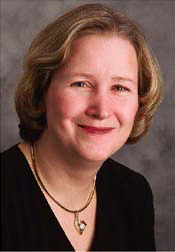Pell Ann Wardrop, MD, an ENT Today editorial board member, is Assistant Professor of Surgery in the Division of Otolaryngology-Head and Neck Surgery at the University of Kentucky. She is board certified in both otolaryngology and sleep medicine. Her practice in Lexington, KY, encompasses all aspects of pediatric and adult sleep medicine.
Explore This Issue
July 2008The general otolaryngologist’s office practice is full of patients with sleep disorders-the hypertensive male with epistaxis, the snoring child with ADHD, the woman with fatigue and restless sleep. As otolaryngologists, we are often the physicians who recognize and initiate evaluation of sleep disorders in our patients. Given the high prevalence of sleep disorders in the population, it is likely that we fail to diagnose some of these patients with sleep disorders who pass through our offices. A negative sleep test, particularly a type III or IV home test, does not rule out all sleep disorders.
Scope of the Problem
The April 2006 Institute of Medicine report, Sleep Disorders and Sleep Deprivation: An Unmet Public Health Problem, contained the following summary:
It is estimated that 50 to 70 million Americans chronically suffer from a disorder of sleep and wakefulness, hindering daily functioning and adversely affecting their health and longevity. The cumulative effects of sleep loss and sleep disorders represent an under-recognized public health problem and have been associated with a wide range of health consequences including an increased risk of hypertension, diabetes, obesity, depression, heart attack, and stroke. Almost 20 percent of all serious car crash injuries in the general population are associated with driver sleepiness. Hundreds of billions of dollars a year are spent on direct medical costs related to sleep disorders such as doctor visits, hospital services, prescriptions, and over-the-counter medications.
Daytime sleepiness is a frequent complaint of those with sleep disorders. While many of these patients have sleep-disordered breathing, some have other sleep disorders causing or contributing to this complaint. Sleep disorders involve abnormalities of the upper and lower airway, central and peripheral nervous system, endocrine system, and cardiorespiratory system. A familiarity with the most common sleep-related causes of daytime sleepiness or fatigue is helpful in evaluating and treating these patients. In addition to sleep disordered breathing, these include restless leg syndrome (RLS), inadequate sleep time, and narcolepsy. Patients who may have sleep disorders other than obstructive sleep apnea are not appropriate candidates for type III or type IV home testing.
Initial Evaluation
For most patients, the evaluation begins with the initial intake questionnaire in the physician’s office (see ENT Sleep Questionnaire sidebar). This general questionnaire should include a few sleep-specific questions such as snoring, witnessed apneas, daytime sleepiness/fatigue, nonrestorative sleep, and frequent awakenings. A positive response to these questions, or the presence of any of the risk factors listed below, could trigger the completion of a more complete sleep-specific questionnaire. The suggested questions listed in the sidebar will help the practitioner assess the patient’s sleep symptoms more accurately. A patient may deny daytime sleepiness, but may be self-medicating with large doses of caffeine. A middle-aged woman may attribute her poor sleep to symptoms of menopause rather than the onset of sleep-disordered breathing. A sleepy patient may lack the insight into the fact that his poor sleep habits and inadequate time in bed are contributing to his symptoms.
Sleep-Disordered Breathing
Sleep-disordered breathing (SDB) is the most common sleep disorder, and it does frequently present with daytime sleepiness. SDB includes obstructive sleep apnea syndrome (OSAS), upper airway resistance syndrome (UARS), snoring, Cheyne-Stokes respiration, and central sleep apnea. The Wisconsin Sleep Cohort study concluded that 82% of men and 93% of women with moderate-to-severe sleep apnea have not received a diagnosis, so OSAS continues to be underdiagnosed.

Leave a Reply